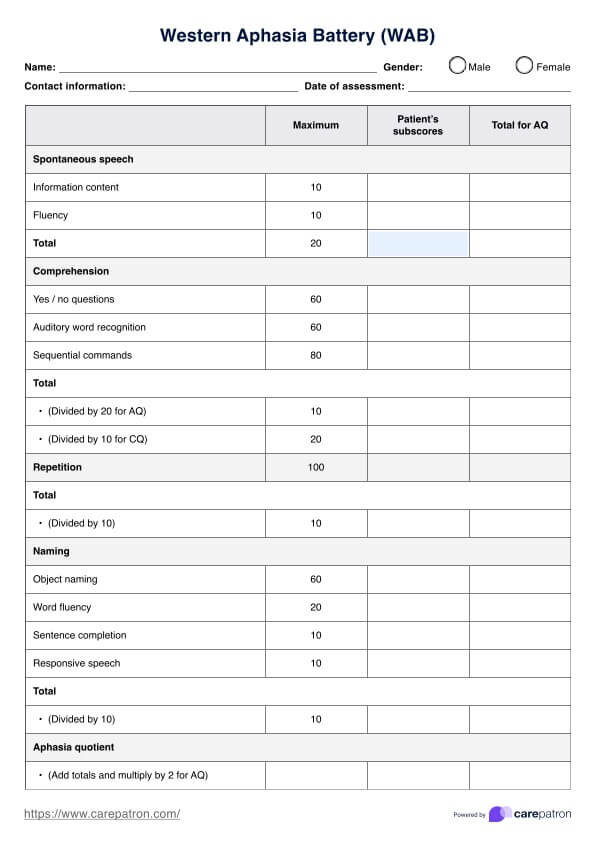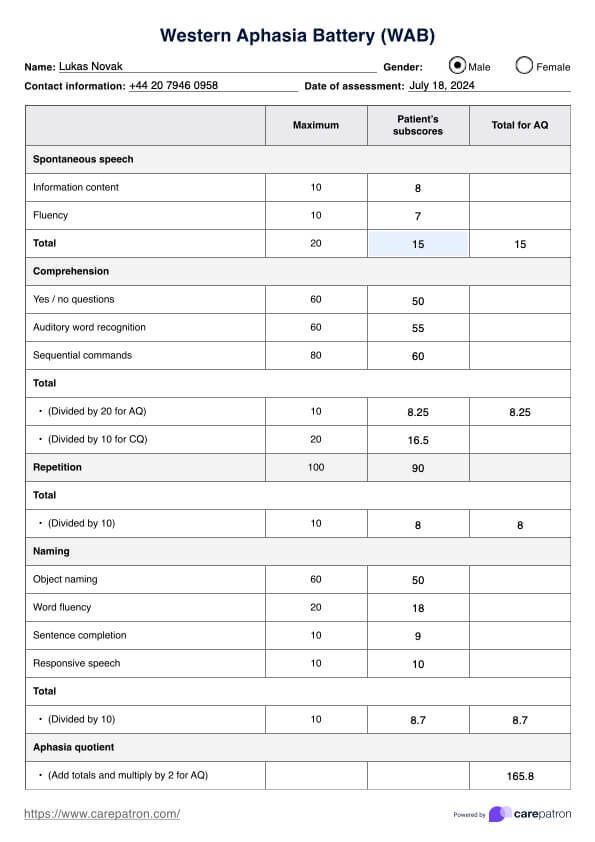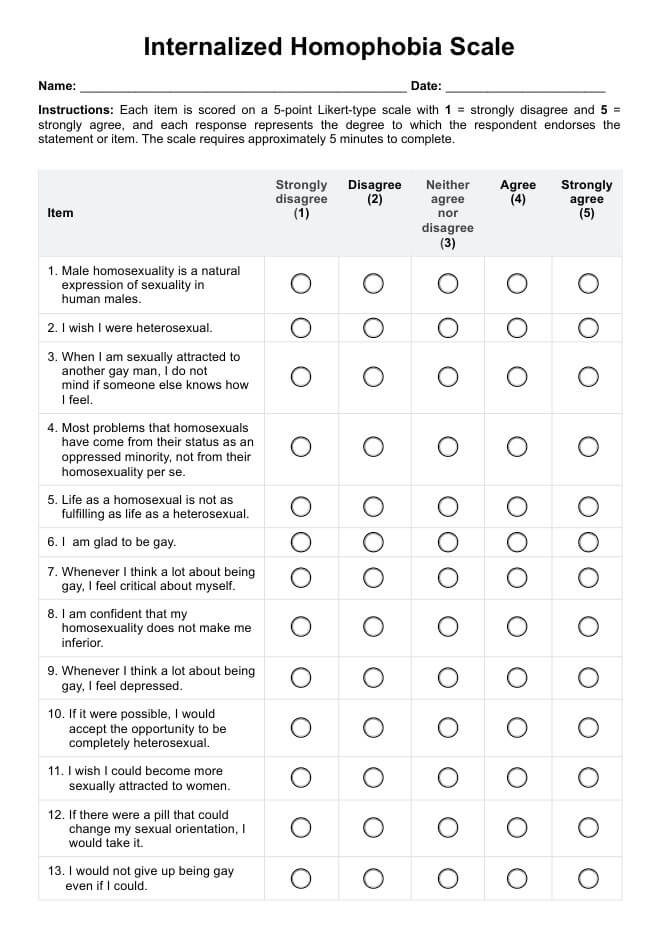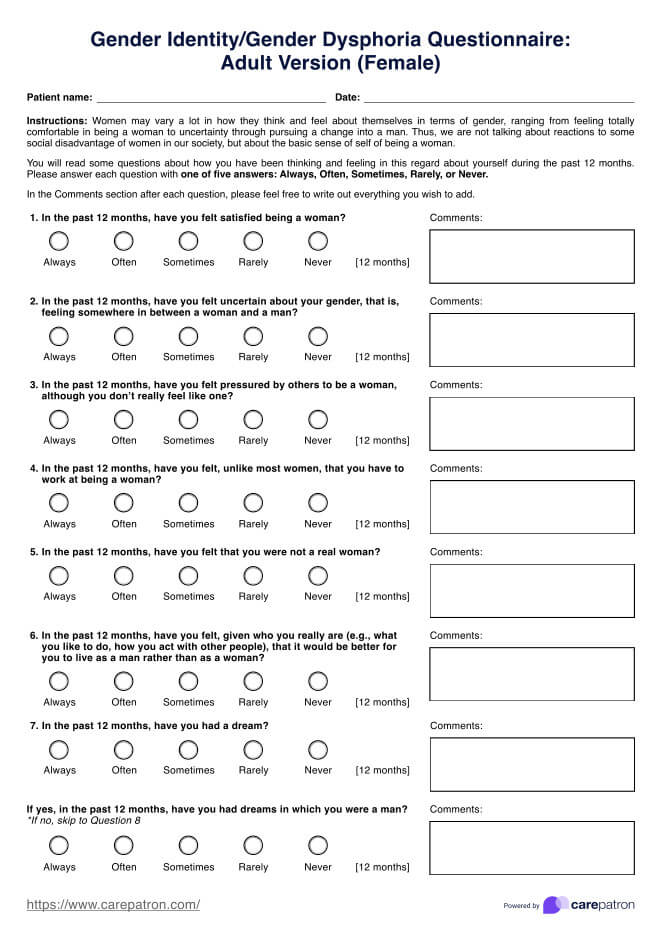Western Aphasia Battery (WAB)
Explore the Western Aphasia Battery, a key diagnostic tool in speech-language pathology that assesses language function and guides aphasia treatment.


What is aphasia?
Aphasia is a communication disorder resulting from damage to brain parts controlling language. This damage impairs the ability to speak, understand others, read, and write. Aphasia typically arises suddenly after a stroke or head injury. Still, it can also develop gradually from a brain tumor or a disease that causes progressive, permanent degenerative damage to auditory comprehension and language production.
Causes of aphasia
The most common cause of aphasia is stroke. Strokes occur when the blood supply to the brain is interrupted or reduced, depriving brain tissue of oxygen and nutrients. Brain cells can be damaged or die within minutes. Other causes include:
- Head injuries
- Brain tumors
- Infections that affect the brain, such as encephalitis or meningitis
- Degenerative diseases, such as Alzheimer's disease or other dementias
Each of these causes affects the brain's language centers, leading to the symptoms associated with aphasia.
Western Aphasia Battery (WAB) Template
Western Aphasia Battery (WAB) Example
What is the Western Aphasia Battery (WAB)?
The Western Aphasia Battery (WAB) is a comprehensive diagnostic tool used to assess the language functions of individuals with suspected aphasia. Developed by Andrew Kertesz, the WAB evaluates various aspects of language, including spoken language, comprehension, repetition, naming skills, auditory word recognition, and reading and writing abilities. It is widely used in clinical settings alongside other tests, such as the Boston Diagnostic Aphasia Examination, to determine the severity and type of aphasia following a brain injury or stroke.
How is the Western Aphasia Battery (WAB) conducted?
The WAB is conducted through a series of standardized tests administered by a trained professional. These tests assess auditory fluency, auditory verbal comprehension, and fluency in auditory verbal comprehension, among other skills.
The battery consists of two main parts: the aphasia quotient (AQ) and the cortical quotient (CQ). The AQ assesses language production, comprehension, repetition, and praxis. The CQ evaluates cognitive abilities related to reading, writing, and calculation skills. The assessment is typically completed in one to two hours, depending on the individual’s condition and responsiveness.
How is the Western Aphasia Battery (WAB) scored?
Scoring the WAB involves calculating the aphasia and the cortical quotient, which showcase this assessment tool's reliability and validity characteristics. Each test within the battery has a specific scoring range, and the scores from individual tests are summed to provide a profile of the person's language abilities.
The aphasia quotient, which ranges from 0 to 100, is particularly crucial as it quantifies the severity of the aphasia—the lower the score, the more severe the impairment. These scores help categorize the type of aphasia, such as Broca’s, Wernicke’s, or global aphasia, and are essential for test interpretation relevant to each patient's condition.
Next steps after conducting/taking the Western Aphasia Battery (WAB)
After the WAB is conducted and the results are analyzed:
Diagnosis
After the WAB is conducted and the results are analyzed, the detailed profile provided by the assessment helps diagnose the type and severity of aphasia.
Treatment planning
Based on the diagnosis, a tailored treatment plan focuses on the areas that require the most intervention. This plan is personalized to address the unique challenges faced by the individual.
Therapy
Speech-language therapy begins, targeting specific deficits identified in the assessment. Therapy may include various techniques and exercises to improve communication skills, particularly focusing on word fluency.
Follow-up assessments
Regular follow-up assessments using the WAB or other relevant tools are conducted to monitor the individual's progress and adjust the treatment plan as necessary. This ensures the therapy remains effective and responsive to the person's evolving needs.
How to use our Western Aphasia Battery (WAB) template
The Western Aphasia Battery is a copyrighted test. Here, we have opted to provide the Western Aphasia Battery scoring sheet template to still serve as a helpful guide for practitioners using the test. Below are detailed steps on how to properly use our WAB scoring sheet template in a clinical setting:
Step 1: Review the template
If you have the Western Aphasia Battery test manual, review it to understand its structure and the types of assessments it includes. Familiarity with sections on spoken language, comprehension, repetition, spontaneous speech, naming, reading, and writing will prepare you for effective use.
Step 2: Conduct the assessment
Guide the administration of the various tests included in the WAB. Follow the standardized instructions for each section to ensure consistency and reliability of the data collected. This may involve tasks related to language production, comprehension, and other cognitive abilities.
Step 3: Record and analyze the results
As you conduct the tests, use the WAB scoring sheet template to record the patient's responses systematically. The template should provide spaces or fields to note scores directly. After completing the tests, use the scoring guidelines provided in the test manual to calculate and interpret total scores.
Step 4: Document and report
Finally, the completed template is used as a formal document to report findings to other healthcare professionals or to record them in the patient’s medical files.
The Western Aphasia Battery provides speech-language therapists with a structured, effective approach to diagnosing and assessing aphasia. It details various linguistic skills and domains, such as speech production, comprehension, and writing abilities, emphasizing precise diagnosis for tailored treatment planning. We have created a template to help practitioners record patient scores on the test and to be able to store a physical or a digital copy in a secured platform.
Commonly asked questions
Aphasia is primarily caused by damage to one or more areas of the brain that deal with language, most commonly from a stroke, head injury, brain tumor, or an infection.
While there is no cure for aphasia, speech and language therapy can help many people significantly improve their language and communication skills.
Family members can support a person with aphasia by using clear, simple language, encouraging all forms of communication (speech, gestures, writing), and maintaining patience and positivity to boost confidence.




















-template.jpg)


















































































